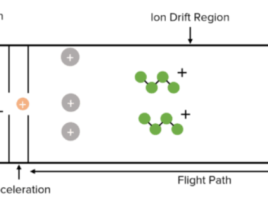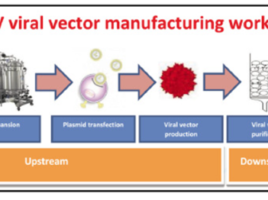
Types of detectors used in HPLC
In order to quantify and identify the compounds separated in the column, HPLC analysis requires a detector to monitor the compounds themselves. The sort of detector used depends on what is being detected. It’s crucial to think about the type of sample you’ll be analysing before choosing a detector. On some detectors, certain sample types will not operate or will have lesser sensitivity. Some detectors destroy the sample to detect it.
The following are some significant aspects to look for in HPLC detectors (1):
- Each molecule in the sample mixture must be detected by the detector.
- Variations in the system’s flow rate, temperature, mobile phase composition, and pressure should not be affected by the detector.
- It should be unaffected by the solvent or mobile phase employed in the experiment.
- It should be able to detect both high and low solute concentrations.
- It should respond to linear concentrations in a linear manner.
- This should result in outcomes that are repeatable and consistent.
- In isocratic and gradient elution, it should have no effect on the mobile phase composition response.
Types of detectors
There are two categories: specific and bulk property detectors (2)
Specific HPLC Detectors
- Mass Spectroscopic Detectors
The sensitivity and selectivity of a mass spectroscopy detector are both high. The detection is based on electric field-induced molecular fragmentation, and the separation is based on the mass to charge ratio of fragmented molecules (1). This is a destructive detector.
2. UV/VIS HPLC Detectors
The ultraviolet (UV) or visible (VIS) detector is the most common in HPLC because it provides good stability, is simple to operate, and has a high sensitivity (1). Fixed wavelength detectors, variable wavelength detectors, and diode array detectors are the three types of UV/VIS detectors.
3. Photodiode Array (PDA) Detectors
PDA is a UV detector and because it has numerous individual diodes, resolution elements, or pixels, it can detect several wavelengths at the same time (1). In a UV/VIS dispersive spectrophotometer, this is a typical ideal detector for the full spectrum (1).
4. Fluorescence Detectors
Fluorescence detectors have great sensitivity for specific groups of components (1). A certain wavelength is used to stimulate the component atoms, which then release a light signal (1). The intensity of the radiated light is utilised to determine the component concentration (1). Fluorescent absorbance can be found in a variety of natural materials, medicines, petroleum products, and clinical samples (1).
Bulk Property HPLC Detectors
- Electrical Conductivity Detectors
Conductivity detectors are bulk property detectors since they are used to determine conductivity, and of their main features is high-sensitivity detection of charged species and surfactants (1). They detect electrical resistance, and the observed result is proportional to the ion concentration in the solution (1).
2. Refractive Index Detectors (RID)
A refractive index detector measures the analyte’s refractive index in relation to the solvent. The deflection and reflection of light in solution are the two concepts that it relies on (1). There are different RID detectors such as the thermal lens detector, the Christiansen effect detector, the dielectric constant detector, and the interferometer (1).
3. Electrochemical Detectors
The electrochemical detector is used to identify compounds that are undergoing oxidation-reduction reactions and to quantify the electric currents generated as a result of these events (1). Because the voltage required for the oxidation-reduction reaction varies depending on the molecule, the electrochemical detector has a high sensitivity and selectivity (1). This is a destructive detector.
4. Light Scattering Detectors
The dispersed light emitted by the eluent is detected using a light scattering detector (1). It is used for molecules with a significant molecular weight, for instance, surfactants, lipids, and sugar (1). There are two types of light scattering detectors, known as low angle laser light scattering detector and multiple angle laser light scattering detector (1). This is a destructive detector.
- Charged Aerosol Detectors
The Charged Aerosol Detector (CAD) is a detector that is used in HPLC to measure the amount of chemicals in a sample by producing charged aerosol particles that are then detected using an electrometer (3). It’s widely used to analyse substances that don’t have a chromophore and can’t be detected using typical UV/Vis methods (3).
Charged aerosol detectors measure different analytes in the areas of pharmaceuticals (large and small molecules), biomolecules, foods and beverages, specialty chemicals, and polymers (3).
At the Bio-Analysis Centre, our HPLC services use the Shimadzu Nexera XR system (Fig.1) , and, at the moment, we have PDA and RID detectors.
HPLC Training
We offer a 3 day course, where you will learn how to set up and run the HPLC. You will also learn about sample preparation methods, HPLC method development, and how to analyse data.
This course is a great opportunity for you to learn and gain experience. For more information please click here.
If you would like to remind yourself of how to use the HPLC, we also offer a 1- Day HPLC Refresher Course. Click here for more information.
References
- Chrominfo. Different Types of HPLC Detectors. (Internet) Available from: https://chrominfo.blogspot.com/2020/07/different-types-of-hplc-detectors.html
- Pharmaceutical Guidelines. Different Types of HPLC Detectors. (Internet) Available from: https://www.pharmaguideline.com/2016/01/different-types-of-hplc-detectors.html
- ThermoFisher. Charged Aerosol Detection for Liquid Chromatography. (Internet) Available from: https://www.thermofisher.com/uk/en/home/industrial/chromatography/chromatography-learning-center/liquid-chromatography-information/liquid-chromatography-innovations/charged-aerosol-detection-liquid-chromatography.html



